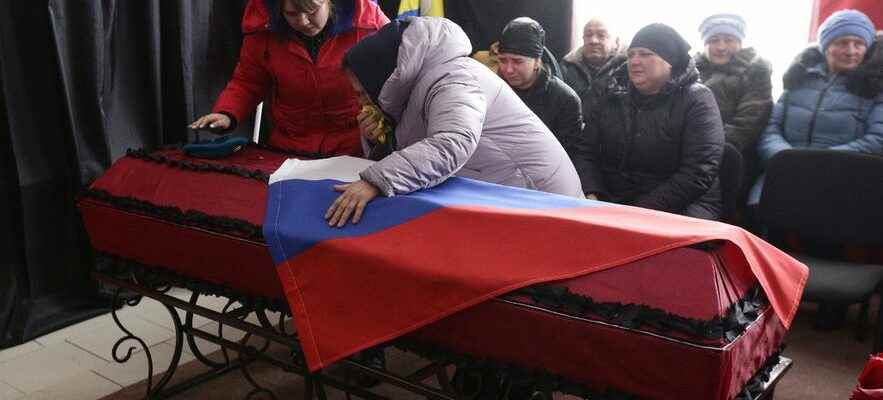From the old technical school of Makiïvka, there remains only a heap of molten metal, shattered concrete plates and ashes, in the early morning of the first of January. Several missiles fired by American Himars rocket launchers struck this building located in occupied territory and transformed into a garrison a few hours earlier. If Moscow reported a death toll of 89 – an unprecedented communication after an attack – kyiv said that more than 400 people had died.
On the scale of the ongoing conflict in Ukraine, the human toll is just as disputed. Neither Ukraine nor Russia release true casualty figures on the war front, an indicator of the state of available forces as much as something that could be used by propaganda to undermine troop morale. opponents or the population.
The latest death toll provided by the Russian military, in mid-September, stood at 5,937 soldiers. It is considered very undervalued. Early January, the bbc and the Russian information site Mediazona, after investigations, in Russian cemeteries, on the freshly dug graves of soldiers, counted more than 11,000 combatants killed. And still it is only about confirmed deaths: “We assume that our list is below 40 to 60%” compared to reality, indicate the two media.
The most maximalist assessment comes from a French officer, current Director General of the European Union Military Staff. “At least 60,000 Russian fighters would have been killed, for three times as many wounded, which means that around 250,000 Russian fighters would be ‘out of service’ today,” Vice-Admiral Hervé Bléjean said in November. during his hearing behind closed doors by the Defense and Armed Forces Commission of the National Assembly.
The senior officer had access to open source analyzes and others provided by the staffs of the Twenty-Seven. An estimate much higher than that unveiled, at the same period, by the Chief of Staff of the American forces: General Mark Milley declared that “much more” than 100,000 Russian soldiers had been injured. In early December, British Defense Minister Ben Wallace made the same observation before a parliamentary committee.
Ukrainian losses understated
“These perhaps only evoked the losses of the army, estimates Yohann Michel, researcher at the think tank International Institute for Strategic Studies. Extended to all the dead of the Russian camp (mercenaries of Wagner, forces of the Chechen leader Ramzan Kadyrov and separatist fighters from Donetsk and Luhansk, Vice-Admiral Bléjean’s estimate remains credible.”
Funeral on March 24, 2022 in Zoubkovo, Siberia, of Sergei Sokolov, a 21-year-old soldier killed in Ukraine.
© / afp.com/Rostislav NETISOV
Other military sources, however, consider these figures to be overstated. “On the Russian side, more than 40,000 fighters were probably killed, to which must be added 60,000 wounded, some of whom, slightly affected, returned to combat, points out one of them, French. On the other hand, we believe that the Ukraine’s military losses are underestimated and that more than 50,000 of their fighters are believed to have been killed – more than the Russians.”
In November, General Mark Milley indicated that Ukrainian military losses were “probably the same” as those of the Russians. For his part, President Volodymyr Zelensky’s adviser, Mykhailo Podolyak, affirmed on December 1 that “10,000 to 13,000 soldiers” from Ukraine had perished.
For the Russian and Ukrainian armies, the fighting of the past year is in any case the deadliest since the Second World War. In a decade of war in Afghanistan, 15,000 soldiers had died, according to Moscow. But Russian military historians estimate that there were actually 26,000.
The numbers are also fuzzy when it comes to the two wars in Chechnya. The first (1994-1996) left 5,700 Russian troops dead and missing and the second (1999-2009) more than 7,000, Russian authorities claimed. According to the Union of Soldiers’ Mothers’ Committees, at least 14,000 have actually perished in each of these conflicts. When the war in Ukraine ends, history is likely to repeat itself: it will be very difficult to establish the exact number of Russian casualties.
